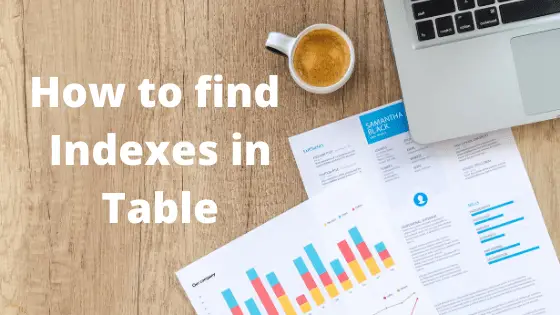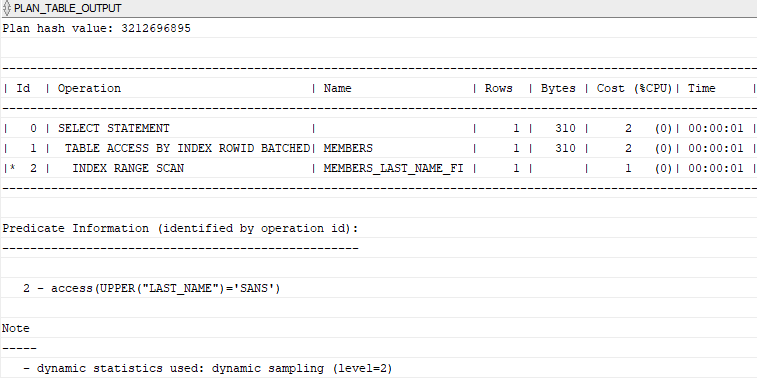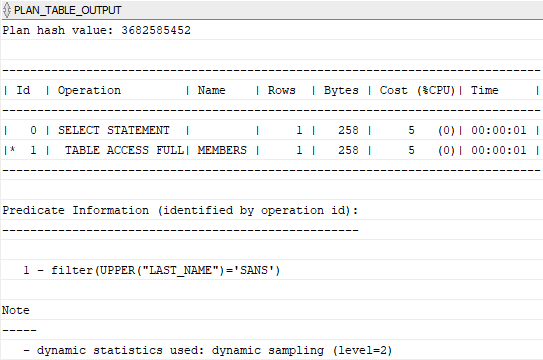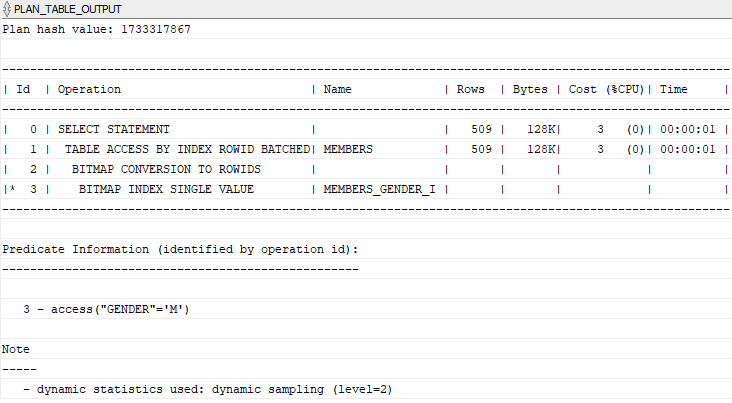Global indexes can be unique. The rowid is stored in the key data portion of the entry and is not part of the key itself.
Here is the query on how to find indexes on a table in oracle.

Query to find unique indexes on a table oracle. It is not unusual to wonder what indexes a specific table might have and what columns in the table are assigned to those indexes. DBA_INDEXES describes all indexes in the database. Select indindex_name ind_colcolumn_name indindex_type induniqueness indtable_owner as schema_name indtable_name as object_name indtable_type as object_type from sysall_indexes ind inner join sysall_ind_columns ind_col on indowner ind_colindex_owner and indindex_name ind_colindex_name -- excluding some Oracle maintained schemas where.
SELECT iindex_name ccolumn_position ccolumn_name iuniqueness FROM sysall_indexes i sysall_ind_columns c WHERE itable_name MY_TABLE AND iowner ME AND iuniqueness UNIQUE AND iindex_name cindex_name AND itable_owner ctable_owner AND itable_name ctable_name AND iowner cindex_owner AND cindex_name IN SELECT. Miscellaneous Information about Creating Indexes on Partitioned Tables. Alter table dates add cal_date_no_time as trunccalendar_date.
They cannot be global indexes. It draws on the information in the dba_ind_columns data dictionary view. Select indtable_owner indtable_name as TABLE indindex_name LISTAGGind_colcolumn_name WITHIN GROUPorder by ind_colcolumn_position as columns indindex_type induniqueness from sysdba_indexes ind join sysdba_ind_columns ind_col on indowner ind_colindex_owner and indindex_name ind_colindex_name where indtable_owner.
Information on why Im asking can be found below. Or you can hide the function in a virtual column. Alter table dates add constraint date_u unique cal_date_no_time.
To gather statistics for this view and the related views DBA_INDEXES and USER_INDEXES use the SQL ANALYZE statement. A regular index stores a list of rowids for each key corresponding to the rows with that key value. HT to Stew Ashton for pointing this out.
SQL column table_owner format a15. CREATE UNIQUE INDEX orders_mod_stat_ix ON orders order_mode order_status. See the indexes for a table.
The single column index would be smaller than the multi-column unique index so would be predicted to require less IO to find the row so would cost less as an access path. You can create bitmap indexes on partitioned tables with the restriction that the bitmap indexes must be local to the partitioned table. Local indexes can only be unique if the partitioning key is a part of the.
Bitmap indexes are typically only a fraction of the size of the indexed data in the table. Now constraints can be find using the below oracle select constraint queries SQL col CONSTRAINT_NAME format a20 SQL col INDEX_NAME format a20 SQL col CONSTRAINT_TYPE format a5 SQL column SEARCH_CONDITION format a30 SQLcolumn R_CONSTRAINT_NAME format a20 select CONSTRAINT_NAME C_NAMEINDEX_NAMECONSTRAINT_TYPESearch_conditionR_CONSTRAINT_NAME R_NAME from user_constraints where TABLE. SELECT FROM t WHERE subno 42 and pos X Would likely use the unique index since both predicates could be resolved in the index entry.
An index provides pointers to the rows in a table that contain a given key value. Set pagesize 50000 verify off echo off col table_name head Table Name format a20 col index_name head Index Name format a25 col column_name head Column Name format a30 break on table_name on index_name select table_name index_name column_name from all_ind_columns where table_name like upperTable_Name order by table_name index_name column_position how to check index status in oracle. In a bitmap index a bitmap for each key value replaces a list of rowids.
Select indindex_name LISTAGGind_colcolumn_name WITHIN GROUP order by ind_colcolumn_position as columns indindex_type indtable_owner as schema_name indtable_name as object_name indtable_type as object_type from sysdba_indexes ind inner join sysdba_ind_columns ind_col on indowner ind_colindex_owner and indindex_name ind_colindex_name where induniqueness UNIQUE -- excluding some Oracle. Im currently using the following query but it wont work right if there are unique indexes on the table besides the primary key. Tom I am struggling with the multiple indexes concept using Index JoinI have two b-tree indexes on the table and I want to fetch the data only by joining these two indexes with out scanning the tableThese two indexes have all the columns in my queryI tried using the hint INDEX_JOINTAB1 IND1 IND2 but It didnt workCould you explain how to use the Index Join on the B-tree index.
Create unique index date_ui on dates trunc calendar_date. In the preceding example an index key might be online0. The following query will provide this information to you.
Suppose you create a composite unique index on two columns of the oeorders table as follows. Select all_cons_columnsowner as schema_name all_cons_columnstable_name all_cons_columnscolumn_name all_cons_columnsposition all_constraintsstatus from all_constraints all_cons_columns where all_constraintsconstraint_type P and all_constraintsconstraint_name all_cons_columnsconstraint_name and all_constraintsowner all_cons_columnsowner order by all_cons_columnsowner all_cons_columnstable. Select column_name from all_ind_columns c all_indexes i where cindex_owner iowner and cindex_name iindex_name and itable_owner me and itable_name table_name and uniqueness UNIQUE.
ALL_INDEXES describes the indexes on the tables accessible to the current user.

How To Find Indexes On A Table In Oracle Techgoeasy

Indexes And Index Organized Tables

Index Types And Index Create In Oracle Database It Tutorial
Compressing Your Indexes Index Key Compression Part 1 Oracle Database Storage Optimization Blog

Oracle Index Tips And Techniques
Index Types And Index Create In Oracle Database It Tutorial

Creating And Maintaining Oracle Text Indexes

Oracle Function Based Index Explained By Pratical Examples

Oracle Function Based Index Explained By Pratical Examples
Defining Constraints Within Create Table In Oracle 12c
Lessthandot Unique Index Difference Between Oracle And Sql Server
Index Column Order Does Matter

Indexes And Index Organized Tables

Indexes And Index Organized Tables 11g Release 2 11 2

Indexes And Index Organized Tables

Toad For Oracle How To Tell What Columns Would Be Good For Indexes


